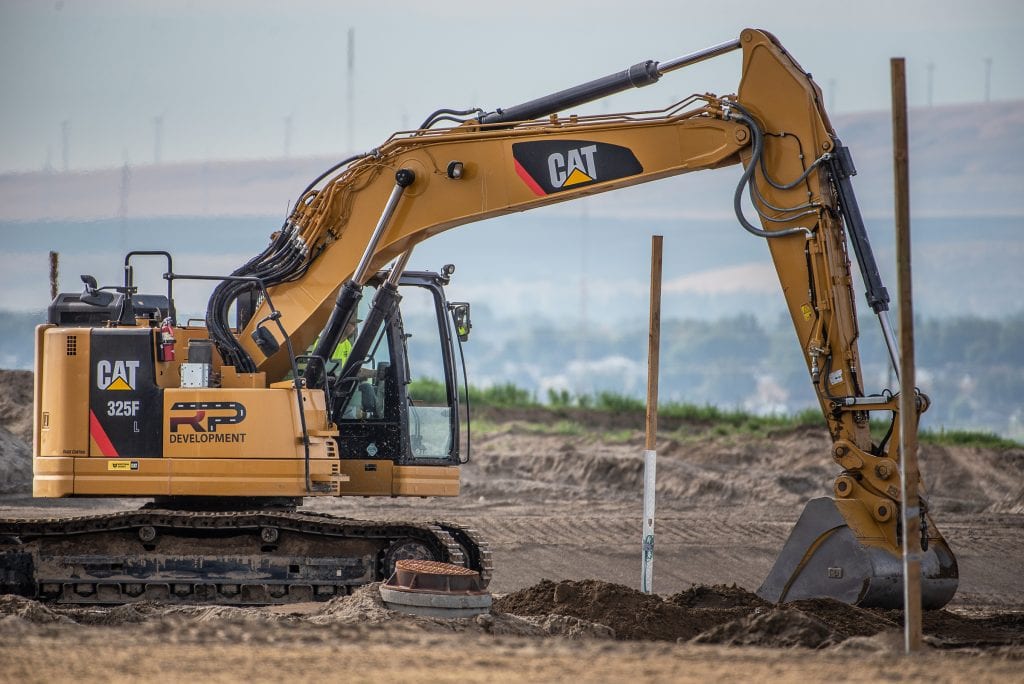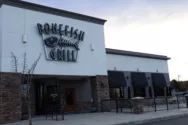
Home » Commercial real estate: local businesses drive development
Commercial real estate: local businesses drive development

October 30, 2018
Despite quick turnover of limited commercial real estate inventory and an ongoing demand for construction services, the Tri-City commercial real estate market continues to boom.
“There is definitely a steady volume of construction that doesn’t seem to be slowing down anytime soon,” said Scott Howard, executive director of the Tri-City Construction Council, the region’s plan center for commercial project bidding, serving Washington, Oregon and Idaho.
Charles Laird, managing broker and co-owner of Tippett Co., a Pasco-based, family-owned brokerage firm, said the market will “probably stay stressed. There’s a lot of demand for construction services all over the state.”
Because prospective developers and those looking to expand their businesses face long lead times, “people are searching the inventory hard,” said Derrick Stricker, commercial broker at NAI Tri-Cities in Kennewick.
In response, many brokers have noticed an uptick in the number of companies not only expanding their own footprint as they grow, but creating additional cash flow by including tenant space in their expansion plans.
“Our businesses are the ones driving the development in the Tri-Cities, not those from outside,” Stricker said.
Low interest rates have helped.
“Businesses in the local economy are growing and being in the position where they either have to get capital to grow, merge or sell to larger firms and recapitalize and bring in more people to work for them,” Laird said.
Laird pointed to a resurgence in office construction around the core business district of Kennewick as a good sign.
“That means rents are going up and investors are looking to invest their capital. The retail side of it is doing really well,” he said.
At the same time, commercial real estate valuations are higher than ever, according to Stricker, who said it’s a great market for retiring business owners looking to leave their industries.
“We’re a baby boomer market, trading out a lot of business leaders and property owners who are seeing an exit that includes property sale or business sale, and those numbers are higher than in the past,” he said.
On the flip side, lease rates also are going up as property values climb.

“Another thing driving it is the triple net charges,” said Gayle Stack, broker/owner at Kennewick-based EverStar Realty.
Triple net, or NNN, refers to an agreement where the tenant agrees to pay all real estate taxes, building insurance and maintenance.
“Property taxes have pretty much risen all over Franklin and Benton counties over the past couple years,” she said. “The overall lease rate for a commercial tenant has increased based on more of those economic factors rather than just supply and demand.
“There’s still a good supply of lease space though, and I believe there’s still enough available to meet the needs of tenants out searching. There’s still quite a lot of commercial land out there that can be developed.”
Laird said he doesn’t see it slowing in the next five years. “The only thing that might slow it down is we’re due for a hike in interest rates,” he said.
In the meantime, areas such as Pasco’s Road 68 and Road 100, Richland’s Queensgate Drive, and Kennewick’s Southridge will see continued growth, experts said.
Areas such as Kennewick’s Vista Field, Columbia Center Boulevard and the downtown core, as well as Richland’s George Washington Way corridor are poised for new retail development in the coming years.
Though new retail and office space continues to open up throughout the Tri-Cities, supply in the industrial commercial real estate sector has continued to lag behind demand, making it some of the most highly sought after and hard to come by property in the area.
Stricker provided the example of West Brinkley Road in Kennewick’s Southridge area, where in the course of 24 months, all available industrial lots were fully absorbed and built on, primarily by local business owners.
“Industrial space has always been scarce in the Tri-Cities. It seems to be one of the last things a developer will build. I don’t know if there’s a perception where the dollars seem bigger to a developer; it may come down to economics too, where one can get a higher price per square foot on retail,” Stack said.
But bigger commercial development projects aren’t as common.
“There’s been a lot of what we’d call small- and medium-size industrial development, but we’re probably lacking in the larger, like the AutoZone distribution center and manufacturing and certain things like that,” Laird said.
AutoZone built a 443,819- square-foot distribution center and truck maintenance yard, valued at $50 million, near Pasco’s King City Truck Stop. It opened in June 2017.
Though east Pasco and north Richland offer plenty of opportunity for industrial land use, Kennewick’s offerings have remained limited, due in part to a small amount of industrial-zoned land availability, Stricker said.
Stricker explained that the other reason has to do with missed opportunities involving Kennewick’s southern urban growth area boundary and available land beyond it that could potentially be acquired and zoned industrial to meet demand.
“To be competitive as a region, we need more focus and support on obtaining that land so that the city can develop it for industrial needs,” Stricker said.
“It would be nice to get a few large industrial users into the area; it helps increase our tax base,” Laird said, adding that this is especially important given Tri-Cities’ continued residential growth.
“It’s just going to take a developer to see the possibilities and to build some construction that serves those needs,” Stack said.
Stricker said he expects to see industrial sites such as those the Port of Pasco owns, as well as those in Richland’s Horn Rapids Business Park and along Reata Road in Kennewick, continue to be targeted for development.
With Trios Health stabilized by its sale to Tennessee-based RCCH Health Care Partners and so many developments underway or due to begin in the coming months, Tri-City brokers are curious to see what new commercial real estate opportunities arise.
“A lot of it’s going to depend on the cost of financing and what interest rates do,” Stack said.
“The market is pinched in this positive commotion of commerce,” Stricker said. “I believe we’re a bullish market though, and I’m very positive.”
Though Stricker added that what the Tri-Cities will look like in the future, really lies in the answer to this question: “How can we create that dynamic kind of market, where not just (commercial real estate) pros are being involved, but others are playing a role in community development?”
Construction + Real Estate
KEYWORDS october 2018





